Crafting a standout assembly line worker resume doesn't have to feel like you're solving a complex puzzle. Let's put the pieces together! Follow our simple guide brimming with handy tips, real-world examples, and nifty templates.
From formatting and key skills to rock-solid experience and education, we’ve got all the tools you need to build a resume that'll roll off your assembly line and straight into your dream job
Keep reading to learn how to:
- Use a resume format that matches your assembly line experience level
- Write a resume summary that hooks employers attention
- Select skills that represent a wide range of assembly line talents
- Highlight your achievements in your work experience section
- List your education accurately and succinctly
- Access top job search resources for assembly line workers
1. Use a resume format that matches your assembly line experience level
As an assembly line worker, there is a range of experience levels you may have – from entry-level to management. This experience level is highly important for many reasons, the first of which being that it is the deciding factor for which resume format to use.
There are 3 main formats to choose between:
- Reverse-chronological: A reverse-chronological resume focuses mainly on your work experience, placing your most recent job at the top of the section with descriptive bullet points for each entry. This format is the standard expected by most employers and works best for applicants with at least 2-3 years of experience in the field.
- Functional: A functional resume removes the focus from work experience. Instead, it emphasizes education, skills, certifications, unpaid experience, and any other non-work experience you may have. This format is well-suited for recent college or high school graduates with academic experience but very limited formal work experience.
- Hybrid: A hybrid resume combines both of the two former formats to create a document that evenly spreads its focus amongst all sections. This resume works well for applicants who have some work experience, who are changing careers paths, who have large gaps in their work history, or all of the above.
2. Write a resume summary that hooks employers attention
A resume summary comes at the top of the document and serves a very crucial purpose: hooking the attention of potential employers.
Your resume summary should be a brief 1 to 3 sentence statement that summarizes who you are as a professional and your key achievements. The more interesting details you can include within the resume summary – such as awards or qualifying certifications – the more effective your summary will become.
To illustrate this, check out this incorrect example of a resume summary, followed by a corrected explanation:
Incorrect assembly line worker resume summary example
Assembly Line Worker with many years of experience working in a corporate factory setting. Held a leadership role in most recent position, leading and delegating tasks to a large crew. Seeking a management-level assembly line job.
What's wrong with this example? Whenever you write a resume summary, you want it to be as specific and detailed as possible. This will help you to catch the eye of the reader – in this case, an employer – and keep them interested enough to check out the rest of what your resume has to offer.
Corrected assembly line worker resume summary example
Assembly Line Worker with 6+ years of experience working in a corporate factory and 2+ years of experience working as an assembly line crew leader. Earned two certifications as part of this leadership position – OSHA Safety Certificate and Forklift Safety Inspector. Increased production goal fulfillment from 95% to 130% in this leadership role.
Why is this better? This corrected example not only provides more specificity but also includes better details that make the summary more compelling to the reader. With information such as certifications and quantifiable achievements, this resume summary is far more likely to impress employers and win you the all-important interview.
3. Select skills that represent a wide range of assembly line talents
When listing assembly line worker skills on your resume, it is important to include a mix of both hard and soft skills.
Hard skills are technical abilities that are learned through training, practice, and education. Soft skills, on the other hand, are interpersonal abilities that deal with how well we work and communicate with other people. Soft skills can be learned but can also be inherent parts of an applicant’s personality as well.
Here are 10 hard skills and 10 soft skills that look great on an assembly line worker’s resume
Hard skills
- Basic Mathematics
- Part Assembly
- Operating Machinery and Mechanics
- Heavy Lifting (always check a job posting for strength and lifting requirements)
- Knowledge of Safety Procedures
- Sanitation Practices
- Quality Assurance and Inspections
- Plastic Manufacturing
- Reading Schematics
- Preventative Maintenance for Machines
Soft skills
- Self Motivation
- Time Management
- Teamwork
- Leadership
- Attention to Detail
- Positive Attitude
- Strong Work Ethic
- Stamina
- Verbal and Non-Verbal Communication
- Focus
4. Highlight your achievements in your work experience section
Your work experience section is the best place for you to highlight your relevant and transferable skills. Even if you have limited experience as an assembly line worker, you can still reflect the necessary skills required to work in this position.
As you write your job entries, it is important to try to include as specific and quantifiable information as possible.
Additionally, you should include any notable achievements from your time in a past job.
Here is an example of a work experience entry from an assembly line worker resume
Assembly Line Worker | Building Quality Objects, Inc.
Naples, FL | June 2019 to March 2021
- Accurately assembled 100% of products in line, passing total production goals by 120%.
- Completed thorough inspections of unassembled parts to ensure they met both quality and sanitation standards.
- Worked alongside a group of 50+ assembly line workers with a high level of cooperation and clear team communication. Awarded “Best Assembly Crew” by the company.
5. List your education accurately and succinctly
To become an assembly line worker, the minimum education required is typically a high school diploma or GED. While there are certification and training programs out there that can help make an applicant more competitive, most hiring companies will provide on-the-job training.
When describing your education on your resume, make sure to keep it as concise as possible. Even in the case of using a functional resume, your education section should not be stuffed with unnecessary keywords.
The vital information to include in this section is:
- The title of your highest level of education (GED, Associate’s, Bachelor’s, etc.)
- The school, university, or institution you attended
- The formal name of a certificate and the certifying institution (when listing certifications)
- Dates of graduation
In some cases, you may include additional details about your educational history to make your resume more eye-catching, such as academic awards or honors.
Here is an example of a well-crafted education section on an assembly line worker resume
Education
High School Diploma | Ashe County High School
West Jefferson, NC
- Graduated: 2014
- GPA: 4.0
- Valedictorian & Student Body President, 2013-2014
Certifications
- OSHA Safety Certificate | NC State Industry Expansion Solutions
6. Top job search resources for assembly line workers
Finding your next assembly line worker job doesn't have to feel like you're inspecting a product line without a checklist. Here are some key resources to aid your search:
- Industry job boards: Websites like Direct Personnel and Production Job Shop host numerous job listings specific to your industry.
- General job platforms: Don't forget resources like Indeed, Monster, and LinkedIn for an extensive collection of job postings from various industries and locations.
- Local trade unions: Unions often have resources to connect candidates with hiring companies. Seek local unions like The International Union, Aerospace, and Agricultural Implement Workers of America (UAW).
- Vocational training programs: Institutions like The Manufacturing Institute offer programs that can equip you with valuable skills to impress potential employers.
- Staffing and recruitment agencies: Agencies such as Aerotek or Randstad typically have established relationships with hiring managers, giving you an operational advantage.
Remember that job seeking isn't a one-size-fits-all process. Explore these resources, see what works for you and keep fine-tuning your approach. After all, even assembly lines require occasional tweaks, right?
Assembly Line Worker Resume FAQ
Can I include part-time or temporary assembly line jobs in my resume?
Certainly. Any experience, contributing to your understanding and skills in assembly line work, is valid. Such roles can demonstrate your adaptability or your ability to learn quickly, both desirable traits.
Should I list machinery/equipment I'm proficient in using on my assembly line worker resume?
Absolutely. Proficiency in specific machinery or equipment can differentiate you from other candidates. It supplies a measure of your technical skills, which are essential in an assembly line setting.
I've worked in different industries as an assembly line worker; how can I reflect this in my resume?
Showing experiences across multiple industries can be advantageous. It outlines the breadth of your skills and adaptability. Categorize your experiences in separate sections under your work history to display the variety of your experience vividly.
Can transferable skills be included in an assembly line worker resume?
Indeed. Skills like problem-solving, dexterity, or teamwork are vital in an assembly line role. If you've developed these in different contexts, show it in your resume. Contextualize these skills within your job responsibilities for maximum impact.
I have gaps in my employment history; how can I address this on my resume?
Gaps in employment history are common and manageable. If you've undertaken relevant courses or certifications, volunteer work during these breaks, list those. If not, prepare to address these gaps honestly in an interview. Always frame these as periods of growth or learning.

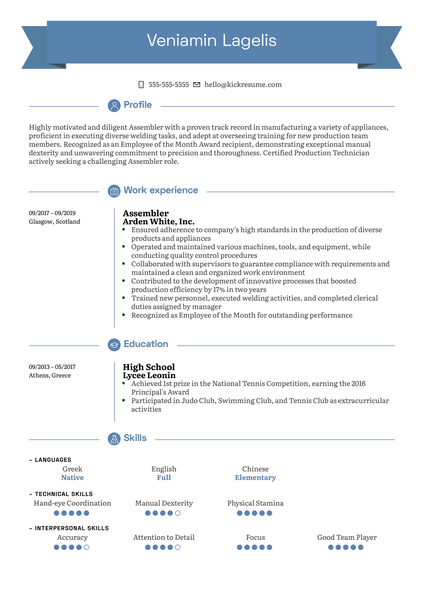


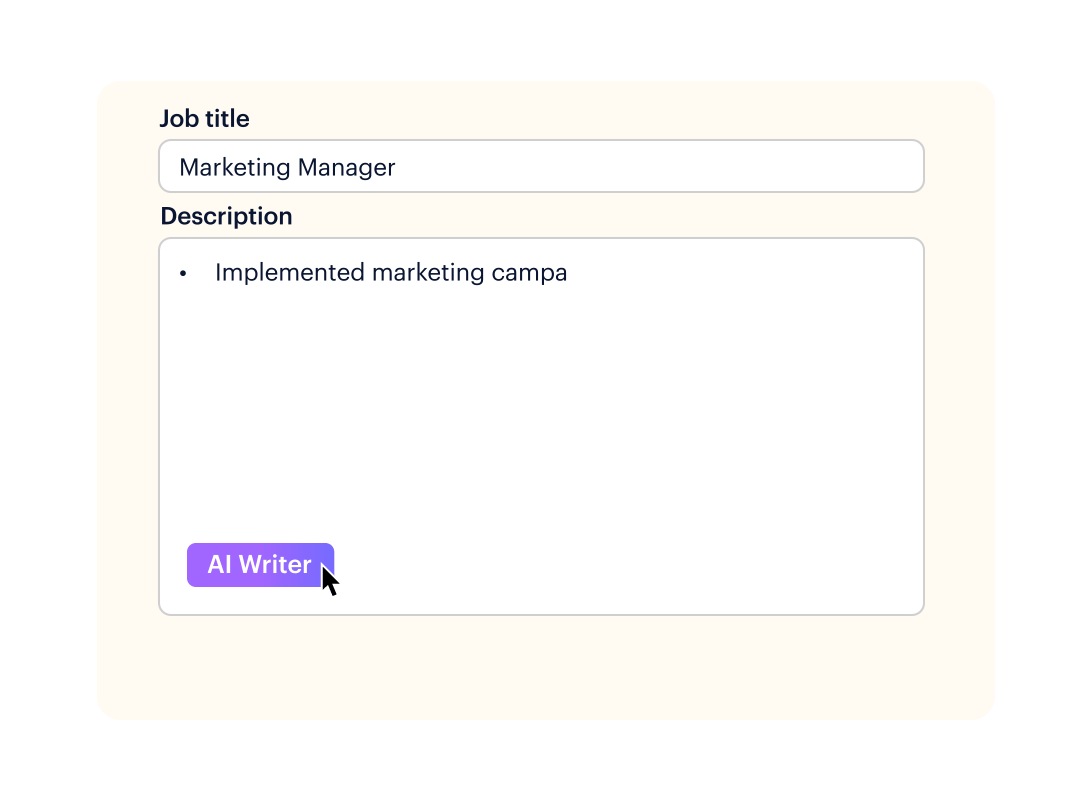


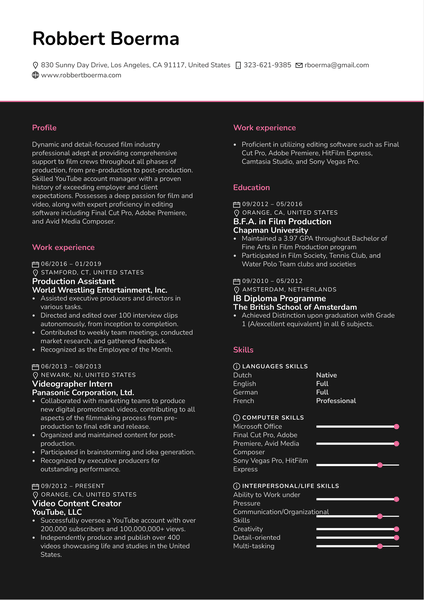

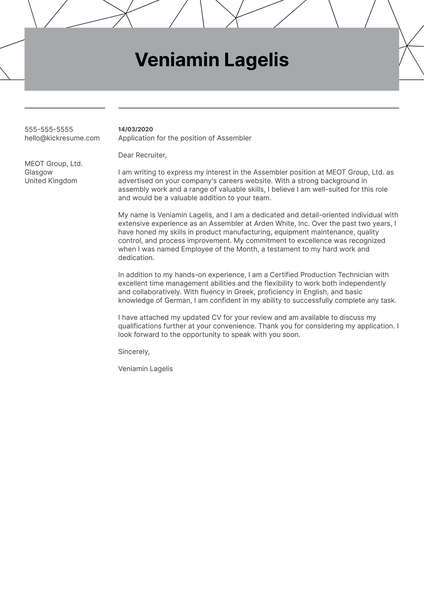
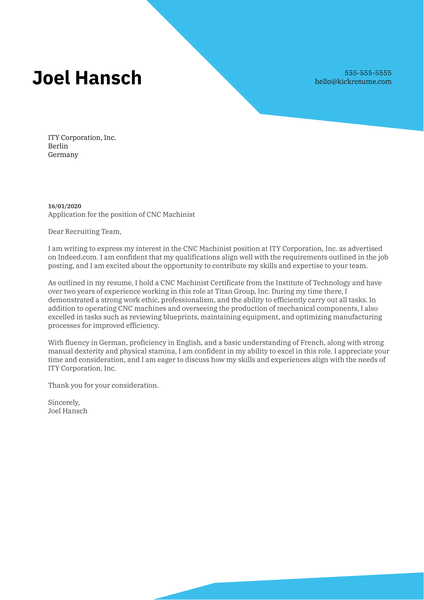

![How to Write a Professional Resume Summary? [+Examples]](https://d2xe0iugdha6pz.cloudfront.net/article-small-images/i-Profile.svg)
![How to Put Your Education on a Resume? [+Examples]](https://d2xe0iugdha6pz.cloudfront.net/article-small-images/i-Collage-Universities.svg)
![How to Describe Your Work Experience on a Resume? [+Examples]](https://d2xe0iugdha6pz.cloudfront.net/article-small-images/Experience.svg)


